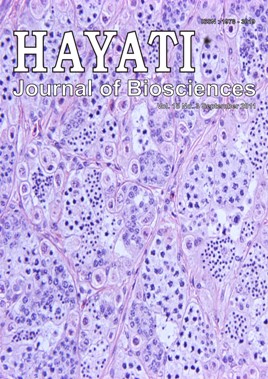<strong><em><span style="font-size:9pt;line-height:115%;">Boronia heterophylla</span></em><span style="font-size:9pt;line-height:115%;"> is cultivated for cut flower production. Three cultivars dominate production, ‘Red’, ‘Cameo’, and ‘Moonglow’. A variety of colors and an extended flowering period are demanded by local and overseas markets. The aim of this study was to develop procedures for a <em>Boronia heterophylla</em> breeding program through intraspesific hybridization. This may yield progeny with desirable characteristics, ideally increased vigor, and a range of flower colors and flowering times. Nine pollination combinations were attempted, each self pollination and all reciprocal crosses. Seed set varied from 17 to 95%. Embryo rescue (was employed to produce hybrid plants using half strength Murashige and Skoog (MS) basal media and it was most successful (75%) 5-6 weeks after pollination. All shoots multiplied on media containing MS salts + NAA (0.1 mg/l) + BA (0.4 mg/l). All shoots transferred to medium containing half strength MS salts + NAA (4 mg/l) produced roots. Plantlets were acclimatized to sterile potting mix (in a small chamber within a glass house. This intraspecific hybridization system was very successful and plants were obtained for all pollination treatments except for selfed ‘Moonglow’. Embryo rescue may provide a system for germinating other species with difficult to germinate or dormant seed.</span></strong>
Abstract
Boronia heterophylla is cultivated for cut flower production. Three cultivars dominate production, ‘Red’, ‘Cameo’, and ‘Moonglow’. A variety of colors and an extended flowering period are demanded by local and overseas markets. The aim of this study was to develop procedures for a Boronia heterophylla breeding program through intraspesific hybridization. This may yield progeny with desirable characteristics, ideally increased vigor, and a range of flower colors and flowering times. Nine pollination combinations were attempted, each self pollination and all reciprocal crosses. Seed set varied from 17 to 95%. Embryo rescue (was employed to produce hybrid plants using half strength Murashige and Skoog (MS) basal media and it was most successful (75%) 5-6 weeks after pollination. All shoots multiplied on media containing MS salts + NAA (0.1 mg/l) + BA (0.4 mg/l). All shoots transferred to medium containing half strength MS salts + NAA (4 mg/l) produced roots. Plantlets were acclimatized to sterile potting mix (in a small chamber within a glass house. This intraspecific hybridization system was very successful and plants were obtained for all pollination treatments except for selfed ‘Moonglow’. Embryo rescue may provide a system for germinating other species with difficult to germinate or dormant seed.Downloads
HAYATI J Biosci is an open access journal and the article's license is CC-BY-NC. This license lets others distribute, remix, tweak, and build upon author's work, as long as they credit the original creation. Authors retain copyright and grant the journal/publisher non exclusive publishing rights with the work simultaneously licensed under a https://creativecommons.org/

























.png) IPB University
IPB University Department of Biology
Department of Biology The Indonesian Biological Society
The Indonesian Biological Society 

